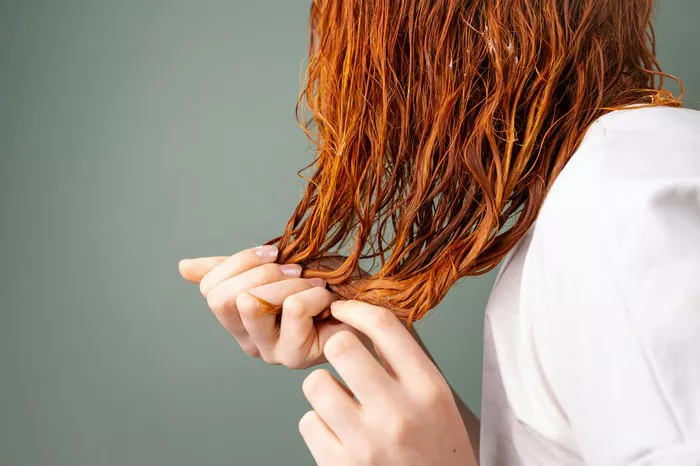If you’ve ever spent time and money coloring your hair, you know how frustrating it is to watch that vibrant shade fade too soon. Sunlight, washing, heat styling, and even the water from your shower can strip away color, leaving your hair dull and lackluster. Enter color protecting shampoo—a game-changer for anyone with dyed hair. This article breaks down everything you need to know about this essential product, from how it works to how to use it for the best results.
What Is Color Protecting Shampoo?
Color protecting shampoo is a specially formulated hair cleanser designed to protect dyed hair from fading. Unlike regular shampoos, which often contain harsh ingredients, color-safe options are gentler. They help lock in color molecules, maintain vibrancy, and keep your hair healthy between salon visits.
Think of it like a shield: regular shampoo might clean your hair, but color protecting shampoo cleans while defending your dye job. It’s a must-have for anyone with colored hair, whether you’re a blonde, brunette, or rocking bold shades like pink or blue.
Why Does Hair Color Fade?
Before diving into how color protecting shampoo works, let’s explore why color fades in the first place:
Washing Hair
Water and shampoo open the hair’s cuticle (the outer layer), letting color molecules escape. Harsh sulfates in regular shampoos speed up this process.
UV Exposure
Sunlight breaks down dye molecules, especially in lighter shades like blonde or pastels.
Heat Styling
Blow dryers, straighteners, and curling irons weaken hair and fade color over time.
Chlorine & Hard Water
Swimming pools and mineral-heavy water can leave hair dry and discolored.
Natural Oils & Products
Some conditioners and oils can strip color if not formulated for dyed hair.
How Color Protecting Shampoo Works
Color protecting shampoos tackle fading through smart science:
Sulfate-Free Formulas
Traditional shampoos use sulfates (like SLS/SLES) to create lather, but these strip color. Color-safe shampoos use gentler cleansers (e.g., coconut-based surfactants) that clean without roughing up the hair cuticle.
Sealing the Cuticle
Ingredients like silicones or natural oils smooth the hair’s surface, sealing the cuticle to trap color inside.
UV Filters
Some shampoos include UV-blocking agents (like ethylhexyl methoxycinnamate) to shield hair from sun damage.
Moisturizing Agents
Dyed hair tends to be dry. Ingredients like argan oil, shea butter, or pantheon hydrate hair, preventing breakage and color loss.
pH Balance
These shampoos are often pH-balanced to match hair’s natural acidity (around 4.5–5.5), which helps keep the cuticle tightly closed.
Key Ingredients to Look For
Not all color-safe shampoos are created equal. Here’s what to check on the label:
- Sulfate Alternatives: Decyl glucoside, coco-glucoside, or sodium lauryl sulfoacetate.
- UV Protectors: Benzophenone-4 or vitamin E.
- Moisturizers: Glycerin, hyaluronic acid, or coconut oil.
- Proteins: Keratin or hydrolyzed wheat protein to strengthen hair.
- Color-Depositing Pigments: Purple (for blondes), blue (for brunettes), or red tones (for auburn hair) to neutralize brassiness.
Benefits of Using Color Protecting Shampoo
Longer-Lasting Color
Reduces fading, so you can wait longer between salon appointments.
Healthier Hair
Hydrating ingredients prevent dryness and split ends.
Cost-Effective
Extending your color’s life saves money on frequent dye jobs.
Customizable Care
Options for different hair types (curly, fine, oily) and colors.
Protection from Damage
Shields against heat, UV rays, and environmental pollutants.
How to Use Color Protecting Shampoo: A Step-by-Step Guide
Wait 72 Hours After Coloring
Let your hair’s cuticle fully close before washing.
Rinse with Cool Water
Hot water opens the cuticle; lukewarm or cool water keeps it sealed.
Apply a Quarter-Sized Amount
Focus on the scalp, then let suds run through the ends.
Massage Gently
Avoid aggressive scrubbing, which can rough up the cuticle.
Leave It On for 1–2 Minutes
Let the active ingredients work their magic.
Follow with Conditioner
Use a color-safe conditioner to lock in moisture.
Limit Washes to 2–3 Times Weekly
Overwashing accelerates fading.
Choosing the Right Shampoo for Your Hair
- Blondes: Look for purple shampoos to fight brassiness.
- Brunettes: Blue shampoos neutralize orange tones.
- Redheads: Sulfate-free shampoos with color-depositing red pigments.
- Bold Colors (Pink, Blue): Use sulfate-free formulas with matching tinted shampoos.
- Damaged Hair: Prioritize moisturizing ingredients like shea butter.
Common Mistakes to Avoid
- Using Hot Water: Opens the cuticle and releases color.
- Overwashing: Strips natural oils and dye.
- Skipping Conditioner: Leaves hair vulnerable to damage.
- Mismatched Products: Using a purple shampoo on brown hair can cause a grayish tint.
Extra Tips for Color Protection
- Wear a Hat in the Sun: Blocks UV rays.
- Rinse After Swimming: Removes chlorine or saltwater.
- Use Heat Protectant: Before styling with hot tools.
- Try a Shower Filter: Softens hard water.
Conclusion
Color protecting shampoo isn’t just a trend—it’s a necessity for maintaining vibrant, healthy dyed hair. By understanding how it works and choosing the right formula, you can extend the life of your color and keep your locks looking salon-fresh. Always pair it with a color-safe conditioner and consult your stylist for personalized recommendations. Your hair (and wallet) will thank you!
Related topics:
What is Color Protecting Shampoo?


